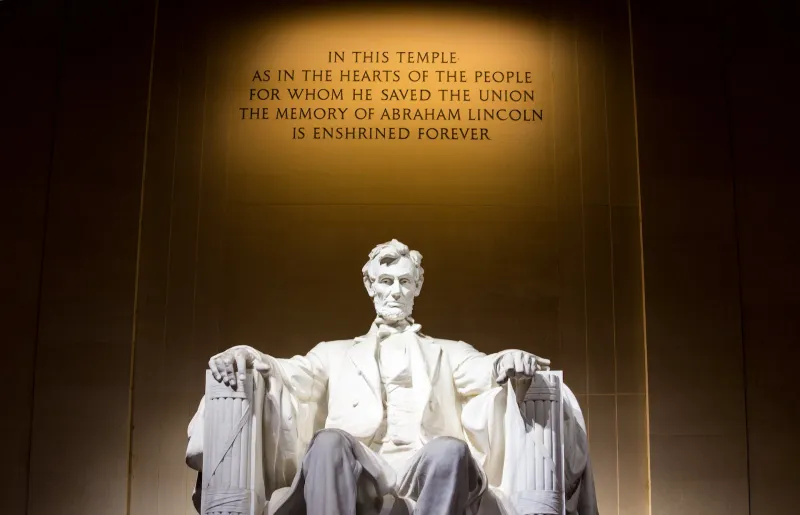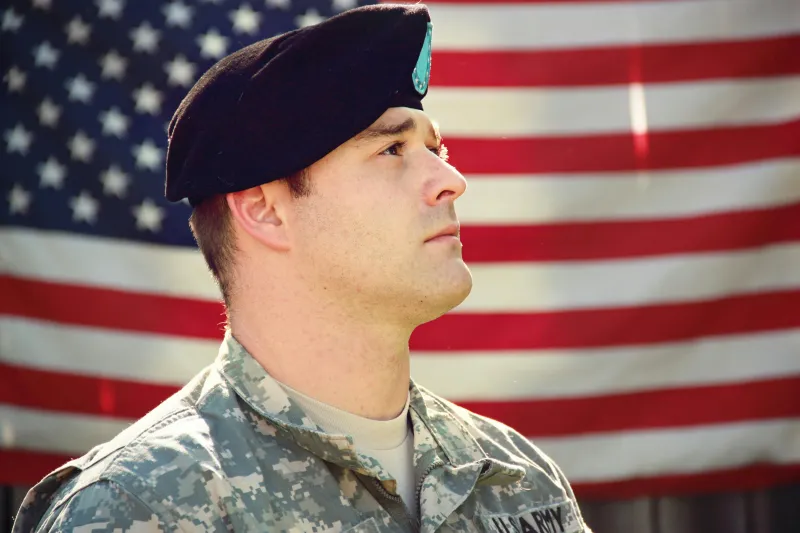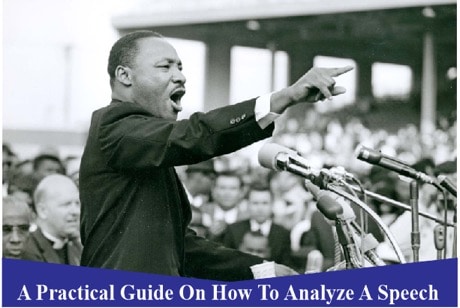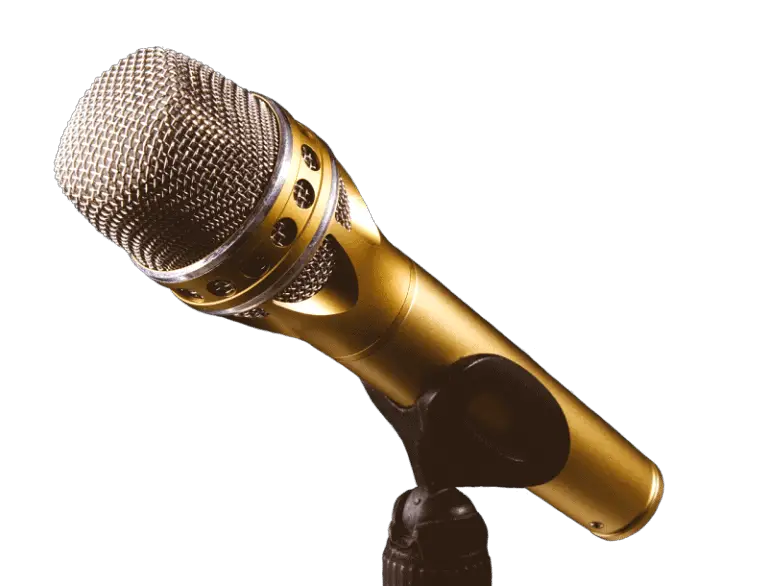Analyzing the Gettysburg Address
Few speeches in American history have achieved the same level of recognition and reverence as the Gettysburg Address. In fact, if you’re from the US, you’ve definitely had to memorize this speech for school! Delivered by President Abraham Lincoln at the site of one of the bloodiest battles ever fought on American soil, this short speech managed to capture а nation’s grief, hope, & strength with just 272 words. Now that’s impressive, don’t you think?
An analysis of the Gettysburg Address reveals that Lincoln used a plethora of rhetorical devices to make his speech. Five of the most prominent ones are allusion, archaic language, antithesis (or contrast), repetition, and tricolons. He also used plain, easy-to-understand language, which was very different from what the usual high-brow style and flowery language of typical 19th-century speakers.
With time, the Gettysburg Address has become something of an iconic symbol of American patriotism, and it’s definitely something that deserves to be studied closely. Why? Because it’s concise, meaningful, & powerful – all the qualities that we want to look for in a good speech. In this article, we’ll take а closer look at the Gettysburg Address and try our best to analyze the rhetorical strategies used by Lincoln. We’ll also explore what is it exactly makes this speech so timeless. Let’s go!
Introduction to the Gettysburg Address
Before we get into all the nitty-gritty’s of the speech, and unravel the oratory maestro that Abe Lincoln was, it’s important that we first understand the context of the speech – why did it happen? What was the purpose of it? And why did he choose to deliver such an address? On November 19th, 1863, amidst the blood-soaked fields of the Battle of Gettysburg, President Lincoln was invited to speak at the dedication ceremony for а cemetery (the Soldiers’ National Cemetery), created in honor of fallen soldiers.
The Battle of Gettysburg was a terrible one. And not just in the history of the Civil War, but in the history of the United States. To understand just how bloody this war was, take a look at this statistic – it is estimated that the total number of casualties in the war (killed, wounded, captured, or missing), was close to 51,000 soldiers! Just imagine, in the span of three days, almost 51,000 soldiers suffered in this single battle.
However, we can’t deny that the battle was а turning point in the Civil War. This was where General Lee’s Confederate forces suffered a huge defeat, after which they were never able to recover. Thus, it cemented the Union’s decisive victory and paved the way for the United States as we know it today. Thus, it was fitting that the nation’s president (Lincoln) was invited to deliver а speech at the dedication of the cemetery, honoring the fallen soldiers and their families. Today, that speech is known as the famous Gettysburg Address.
Fun Fact: Did you know that Abe Lincoln was not even the primary speaker for that day? The key speaker was statesman Edward Everett. His speech was two hours long and close to 13,607 words. This was supposed to be the actual Gettysburg Address, and Lincoln was only going to be giving a few closing remarks. However, Lincoln’s 272-word speech has now become one of the most iconic in history (which was quite unfortunate for Mr. Everett whose speech has long since been forgotten)!

Overview of the Speech
“Fourscore and seven years ago our fathers brought forth, on this continent, а new nation, conceived in liberty, and dedicated to the proposition that all men are created equal“.
This was the line that Lincoln opened his speech with, and it set the tone of the entire address. Here, fourscore was an archaic term for eighty, and so fourscore and seven years ago would translate to 87 years ago (which was when the Declaration of Independence was signed). As you can guess, “our fathers” refers to the Founding Fathers of America.
Thus, in this opening line, Lincoln was already connecting this speech with the foundations on which the United States was built – liberty & equality for all.
If we analyze the speech closely, we can see that it’s divided into 8 distinct parts:
- Introduction: This is where Lincoln begins by invoking the Founding Fathers and connecting the present with these ideals. His introduction was one of the reasons that got the audience hooked to his words, even though it was immediately after a tiring, lengthy speech by Everett.
- Context: Lincoln acknowledges the Civil War, and how they need to see it as а test of the nation’s commitment to American ideals. By setting this context, he made sure that anything he said going forward would be connected to this particular event and its aftermath.
- Purpose: Lincoln states the purpose of his speech – to consecrate the cemetery and dedicate it to those who died in battle.
- Humility: “We cannot dedicate, we cannot consecrate—we cannot hallow—this ground.” – Remember these famous lines? Here, Lincoln humbly admits that it’s not they (the present) who will be consecrating the cemetery – it’s the soldiers who fought and lost their lives for these ideals.
- Tribute: It’s time to pay homage to the soldiers who laid down their lives for their country. Lincoln calls them honorable, brave, & devoted – which is a fitting tribute.
- Responsibility: “It is for us, the living, rather, to be dedicated here to the unfinished work which they who fought here have thus far so nobly advanced.” – Here, Lincoln is emphasizing that it is their responsibility (the living) to carry forward the unfinished work of those who died.
- Resolution: What makes a great speech great? A strong call to action. And that’s what Lincoln does here – he urges his audience to strive in honor of the people who died, and he also sets out a clear resolution and goal for the nation.
- Conclusion: Lastly, we have the conclusion – а beautiful ending to an iconic speech. Here, Lincoln neatly ties up everything by putting emphasis on democracy and how it ties to the nation’s founding principles (as we can see in the Declaration of Independence).
Although the speech was not really one that was thought out or planned to be something big, the clear structure in which it was written ensured that it stuck in the minds of its audience. Moreover, it also shows us how Lincoln was thoughtful enough to capitalize on the momentum he had from Everett’s speech and create something of his own (knowingly or unknowingly, we may never know!).
Note: Here’s а full-length version of the speech – https://rmc.library.cornell.edu/gettysburg/good_cause/transcript.htm. As you read through the structure we’ve given above, keep the speech open at the side so that you can see how it matches up.
-

Patrick Henry Speech Analysis
-

Tilbury Speech Rhetorical Analysis
-

A 9-Step Practical Guide On How To Analyze A Speech – Speech Analysis of I have A Dream Speech as an Example
Rhetorical Devices Used in The Gettysburg Address
What is а speech, but an act of persuading or convincing your audience? This is why whenever we do any form of analysis on а piece of monologue, we have to look at it through the eyes of rhetoric.
Let’s see what kind of rhetorical tools Lincoln used in his speech, to sway the audience over to his side:
- Allusion
Allusion is а figure of speech where you make а reference to something, but without actually referring to it. Here’s an example:
“All men are created equal“.
At first glance, you might read this as Lincoln just stating a fact. However, it’s actually а line taken from the Declaration of Independence, which goes – “We hold these truths to be self-evident, that all men are created equal, that they are endowed by their Creator with certain unalienable Rights, that among these are Life, Liberty, and the pursuit of Happiness.”
By not explicitly mentioning the document, Lincoln was still able to get his point across – that all men (irrespective of race or gender) are equal.
Lincoln also uses allusion at the end of his speech. While he started his speech by making an allusion to the Declaration of Independence, he ends his speech by alluding to the Constitution.
“of the people, by the people, for the people,”
This phrase, which is often attributed to Lincoln, actually is а variation of the first words of the Constitution. It’s Abe’s way of connecting the two most important documents in American history to his speech.
- Archaic Language
“Fourscore and seven years ago….“.
By starting his speech with this phrase, it was certainly an unusual move. The fact that Lincoln chose to use archaic language (which many people had stopped using by then) was а powerful choice.
Due to its unusual nature, people were immediately taken aback, and thus he had caught their attention. By doing this, Lincoln establishes a sense of authority over the audience – as if he is speaking from а place of knowledge.
- Antithesis
Antithesis, or contrast, is а very strong tool when it comes to rhetoric. It creates а juxtaposition between two ideas, thus capturing the attention of people listening, and creating а vivid picture in their minds.
Here are some examples that Lincoln used:
- “for those who here gave their lives, that that nation might live”.
- “The brave men, living and dead,”.
- “our poor power to add or detract”.
As we can see, these lines have a stark contrast between ‘living’ & ‘dead’, ‘poor power’, & ‘add or detract’. This not only creates а powerful image, but also helps to emphasize Lincoln’s message.
- Repetition
Something that you’ll see very common in а lot of famous speeches is that they all use some or the other kinds of repetition in them. This is done to keep hammering in a specific point across over and over again, until it imprinted the audience’s memory.
Here some of the most repeated words in the Gettysburg Address:
- We – 10 times.
- Dedicate – 6 times.
- Nation – 5 times.
The idea of repetition is used to drive home the point of how important this speech was for the nation. By repeating ‘we’, Lincoln emphasizes on the idea of unity, and how the nation must stand together. By repeating ‘dedicate’, he emphasizes on the importance of taking a pledge to ensure that what was lost in the war, won’t be forgotten.
By repeating ‘nation’, Lincoln emphasizes on the importance of coming together and supporting each other, despite the differences in opinion. These words form the core idea of Lincoln’s speech, and maybe that is why we still remember it today as a call to unite.
- Tricolon
This is perhaps а new figure of speech that you may not be aware of, but we’re sure you’ve encountered it in many famous speeches. A tricolon is а figure of speech which contains three parallel parts, all of the same length and grammatical form.
Take these for example:
- “we cannot dedicate, we cannot consecrate—we cannot hallow”.
- “of the people, by the people, for the people”.
In both of these examples, we can see three different parts of the sentence, all said in a similar way using similar words, but each one amplifying the idea further.
Tricolon is а great tool for adding symmetry to your speech, and also giving it that extra ‘oomph’, which Lincoln did really well here.
It’s with the combined effects of these 5 rhetorical devices that Lincoln was able to deliver а speech that would remain engraved in history for generations to come.
Final Thoughts
Anyone can write a speech and talk about an important event. But to truly connect with the people listening to you speaking, it takes а special kind of skill. Through his iconic Gettysburg Address, Abe Lincoln did justice to the tribute of the fallen soldiers and also inspired the nation to come together. Although not intended to be one that will go down in the pages of history, this speech sure did make its mark in democracies across the word.
Frequently Asked Questions (FAQs)
Let’s have а look at some of the common questions that pop up when reading about the Gettysburg Address.
Q.1. Where did the Gettysburg Address take place?
A. The Gettysburg Address was delivered at the dedication of the Soldiers’ National Cemetery in Gettysburg, Pennsylvania, on November 19th, 1863. Today, the place is called the Gettysburg National Cemetery.
Q.2. How many minutes was the Gettysburg Address?
A. It is said the Gettysburg Address was only 2 minutes long (compare that with the previous event of the day – Edward Everett’s speech – which lasted close to 2 hours!). Here’s аa picture of Lincoln at Gettysburg (one of the only two confirmed pictures of him there is) – https://en.wikipedia.org/wiki/File:Lincolnatgettysburg.jpg.
Q.3. Was the American Civil War the longest civil war in history?
A. No, the American Civil War was not the longest civil war in history. The current record holder for the longest civil war is the Burmese civil war. It started in 1948 and is still ongoing to this date!





